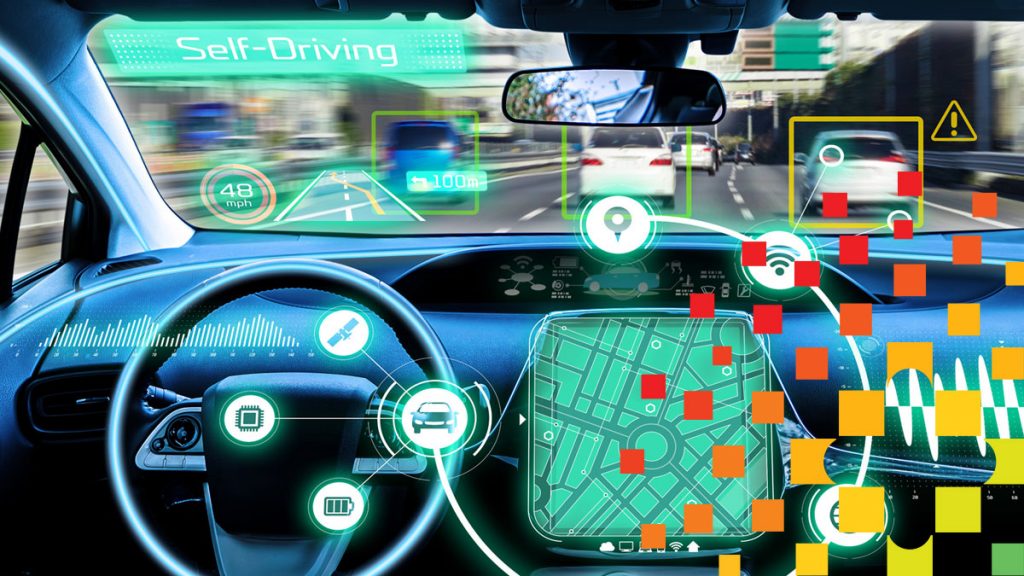This market research report was originally published at Omdia | Tractica’s website. It is reprinted here with the permission of Omdia | Tractica.
Lidar technologies are the cool thing for autonomous vehicle (AV) developers. Why? Because lidar is less expensive, lighter, smaller, and takes less power than cameras that capture visible light. In addition, lidar can be designed to capture a point cloud of data to produce a 3D representation of the vehicle’s surroundings. Let’s take a look at what Waymo is doing with lidar.

Jaguar fully self-driving I-PACE electric SUV 1 (Source: Waymo)
From gangly prototypes to sleeker AVs
As you may know, Waymo began life in 2009 as the Google self-driving car project. When I lived in Mountain View, California—about three blocks away from Google headquarters—I would often see the Google AV prototypes on the road. They had cameras and all manner of sensors hanging off the sides, front, top, and rear of the prototypes on ugly equipment racks.
Now, on Waymo cars and those of other AV companies, many of those cameras and sensors have been scaled down, and some have been replaced with lidar sensors. Lidar technology has become essential to the development and success of AVs. As a result, most of the leading AV companies have either acquired lidar makers or developed their own proprietary lidar tech.
How does Waymo lidar work?
There are two main types of lidar technologies. One is a solid-state chip that gathers data from one point of view. The other is a mechanical approach that usually includes a rotating mirror and turntable. Lidar is so popular that more than 70 startups are developing various types of lidar technology, including solid-state, microelectromechanical systems (MEMS), and flash lidar. Waymo’s Honeycomb rotating approach provides a horizontal field of view up to 360° and a vertical view of up to 95°. This reduces the number of sensors needed and provides a comprehensive view around the vehicle, including blind spots.
Honeycomb uses proven mechanical rotating lidar, and Waymo believes it is superior to the lidar from other companies. That feature and the company’s ability to monetize its proprietary technology and reach manufacturing economies of scale are the reasons behind the move to license Honeycomb to other companies.
Waymo lidar for sale
So far, Waymo is the only AV company to offer its lidar tech for licensing. The catch? Only non-AV companies can license Honeycomb. The Waymo technology is based on 11 years of experience and more than 1 million miles of testing of AV hardware and the software stack designed to integrate with the sensors.
This gives the company’s technology a distinct advantage when clients consider licensing it. Who might use the Honeycomb technology? Potential licensees include developers of robots and machines for agriculture, construction, delivery, and drones.
Can Honeycomb compete in the market?
The question is whether Honeycomb will be competitive in the market. It is based on established technology, which means it is starting out behind the curve of new developments in lidar. And there are many other companies offering to license their lidar technology. As a result of this competition, the newest lidar tech is faster, cheaper, smaller, and has better performance than similar technology just a few years ago.
Waymo does have an advantage of years of experience and millions of miles. However, the company currently only offers one lidar model. This does not compare well with other companies that offer multiple types of lidar technologies and systems, as well as custom development.
Also, is Waymo ready to devote the necessary resources to interact with dozens or hundreds of end users to sell and support its Honeycomb technology? Time will tell if this will be a success or another example of failed technology from Google.
What lies ahead for the future of lidar?
Like most lidar today, Honeycomb uses a pulsed technology. This basically provides a series of snapshots of the surroundings. The next big thing being developed for lidar is frequency-modulated continuous-wave (FMCW) technology. In addition to real-time 3D modeling, this would enable the detection of the velocity and range of an object in real time. FMCW tech is going to be difficult to develop. But once it becomes a reality, FMCW will make current lidar offerings—including Honeycomb—seem quaint and outdated.
For more information on this topic, check out these Omdia reports and blogs:
“3D Imaging Sensor and Hardware Subsystem Market to Reach $57.9 Billion Worldwide by 2025” (January 2019)
“Robotic Components: The Building Blocks of Robotic Life” (January 2020)
“Robot Senses: Robots That Can See, Hear, Feel, and More” (April 2020)
Glenn Sanders
Senior Analyst, Omdia | Tractica


